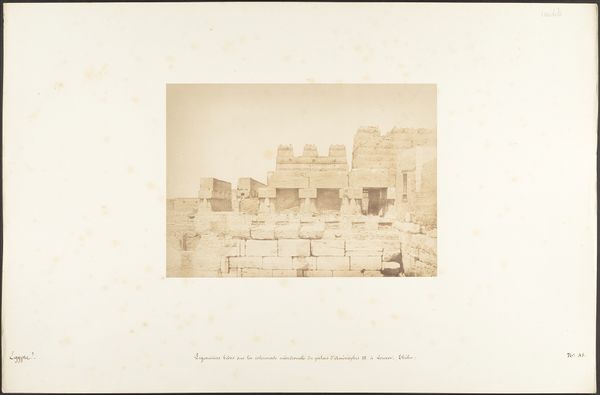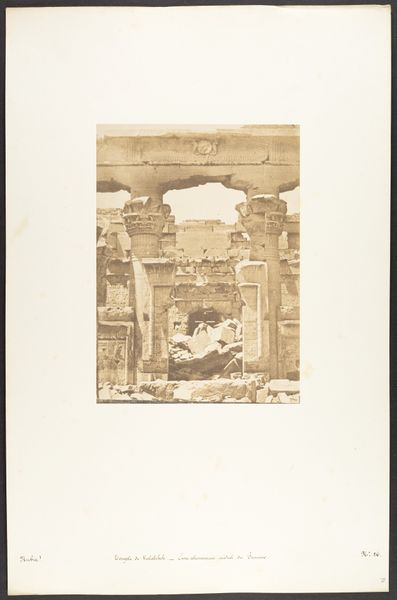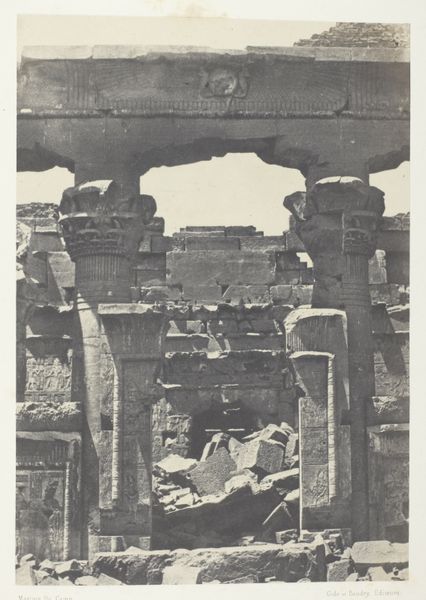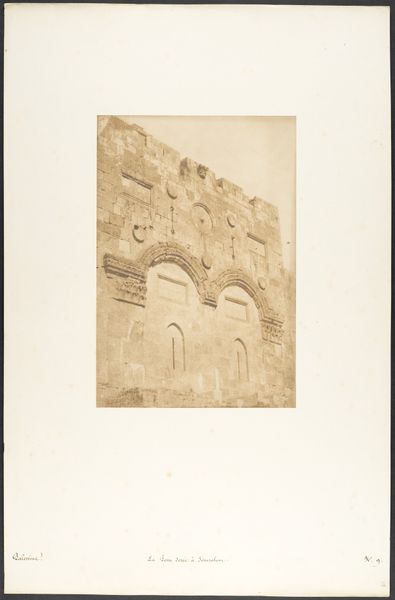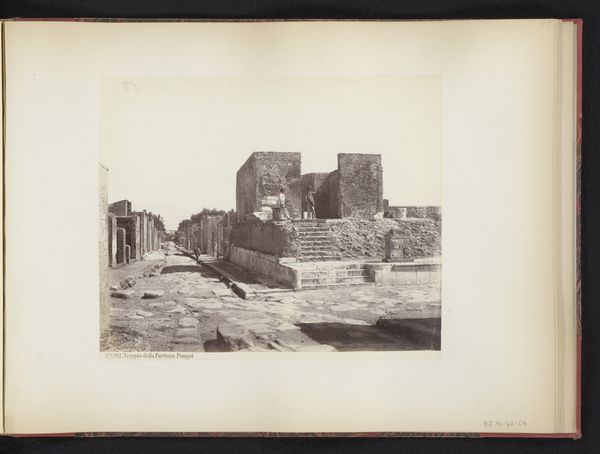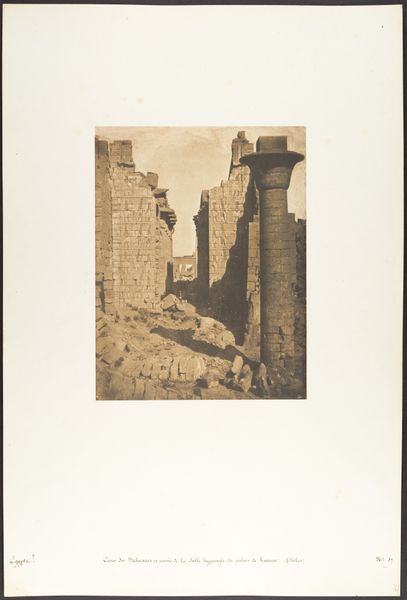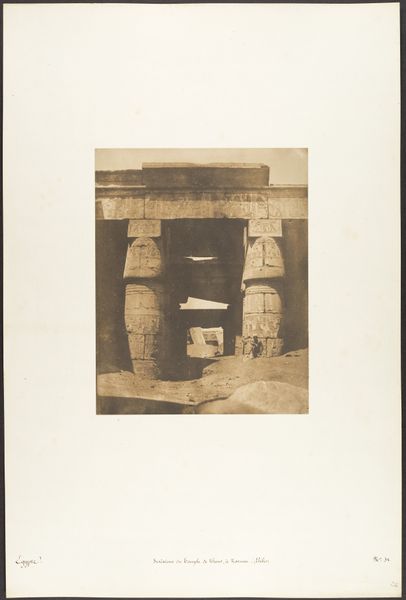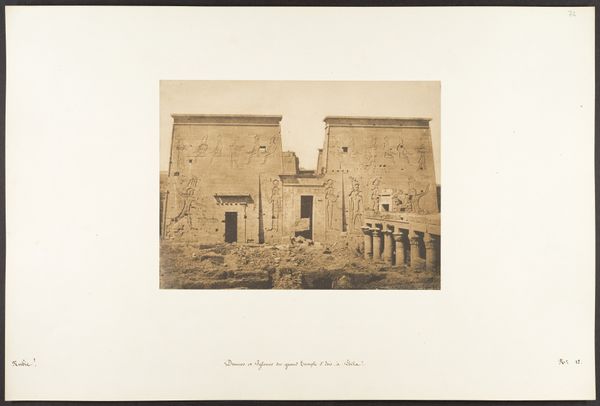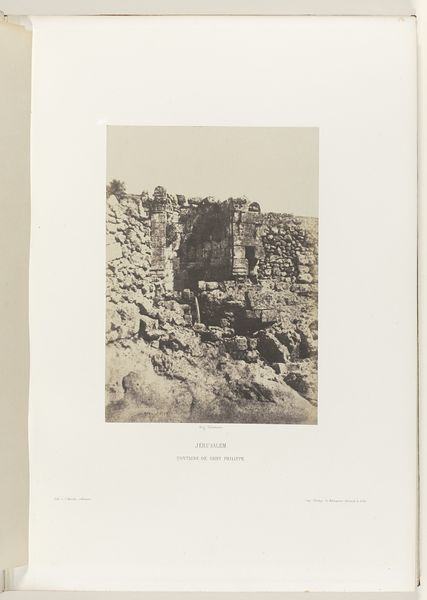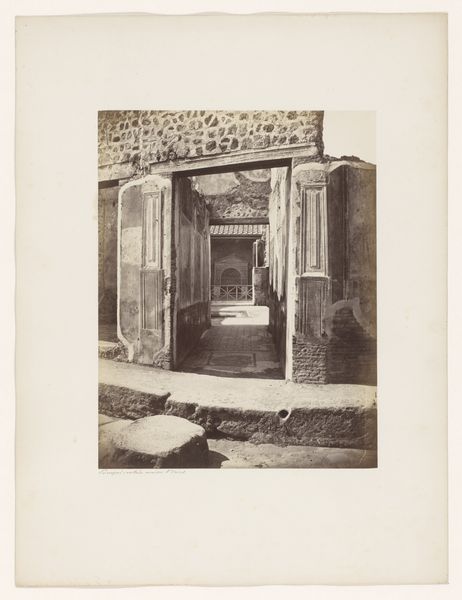
Porte du Temple de Jupiter, à Baalbek (Héliopolis) 1850
0:00
0:00
photography, gelatin-silver-print, architecture
#
landscape
#
photography
#
ancient-mediterranean
#
orientalism
#
gelatin-silver-print
#
architecture
Dimensions: Image: 8 3/4 × 6 9/16 in. (22.3 × 16.7 cm) Mount: 12 5/16 × 18 11/16 in. (31.2 × 47.5 cm)
Copyright: Public Domain
This photograph of the Porte du Temple de Jupiter in Baalbek was made by Maxime Du Camp, one of the first people to use photography for archaeological documentation. Du Camp used the calotype process, an early photographic technique that renders images with a soft, almost painterly quality. Notice how the warm, sepia tones and the texture of the paper itself give the image a tangible, almost tactile presence. The process involved exposing paper treated with silver iodide to light, creating a negative image. This negative was then used to create a positive print, capturing the monumental scale and intricate stonework of the temple ruins. Du Camp was commissioned to document historical sites, and this photograph speaks to the intersection of art, science, and imperial ambition. Photography offered a new way of seeing the world, documenting its monuments and artifacts with unprecedented accuracy. This image isn’t just a record of a place; it’s a testament to the power of photography to shape our understanding of history and culture. By emphasizing materiality, making, and context we can better understand the interplay between artistry and the broader social forces that shaped its creation.
Comments
No comments
Be the first to comment and join the conversation on the ultimate creative platform.
